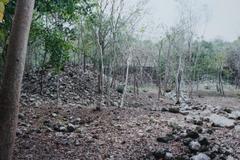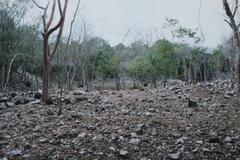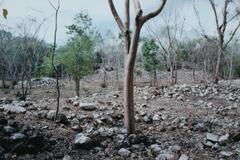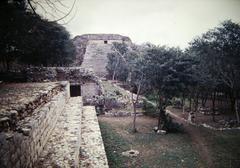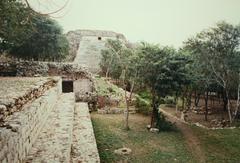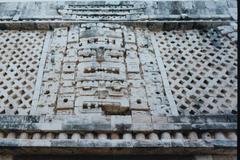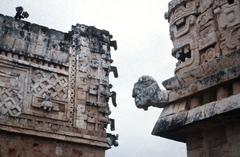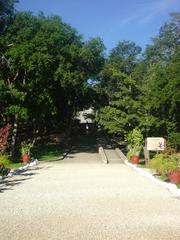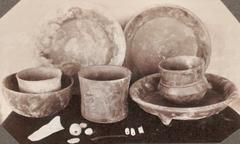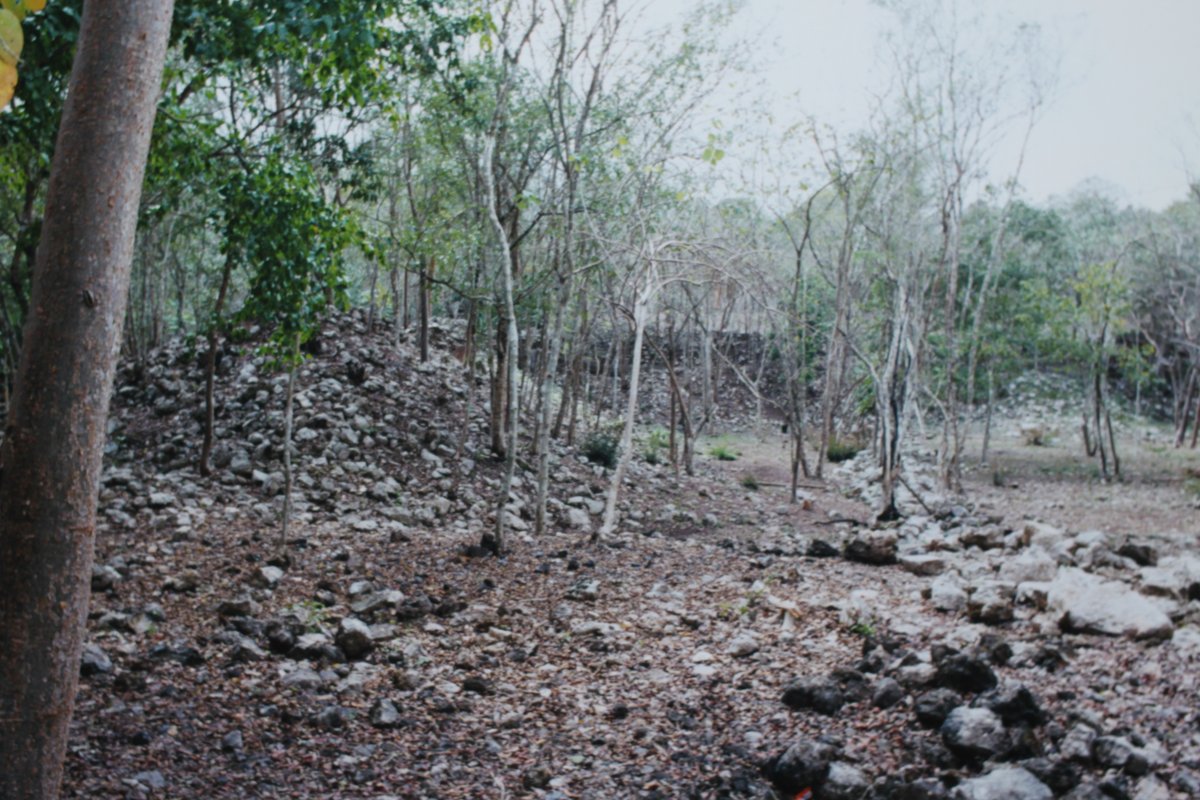
Uxmal Visiting Hours, Tickets, and the Complete Guide to Yucatán’s Historical Sites
Date: 14/06/2025
Introduction: Uxmal’s Enduring Legacy
Uxmal rises from the northern Yucatán Peninsula as a masterwork of Maya civilization and Puuc architecture. Famed for its intricately carved stone mosaics, grand ceremonial plazas, and the iconic Pyramid of the Magician, Uxmal offers a vivid window into Maya artistry and engineering from the 6th to 10th centuries CE. Its very name, often interpreted as “thrice built,” alludes to the city’s layered history and complex urban evolution. Today, Uxmal is celebrated as a UNESCO World Heritage Site and continues to captivate travelers, scholars, and photographers with its blend of myth, innovation, and enduring cultural heritage (World History Encyclopedia; Ancient Origins).
This comprehensive guide brings together essential information—visiting hours, ticketing, accessibility, travel tips—and explores Uxmal’s significance, architecture, and ongoing preservation, ensuring your visit is as enriching as it is memorable (UNESCO; World Heritage Sites; Hungry Backpack).
Table of Contents
- The Rise and Flourishing of Uxmal
- Uxmal’s Role in the Maya World
- Architectural and Artistic Achievements
- Religious and Cultural Significance
- Uxmal Visitor Information: Hours, Tickets, Travel Tips
- Conservation and UNESCO World Heritage Status
- Uxmal in the Modern Era
- Health & Safety
- FAQs
- Further Resources
The Rise and Flourishing of Uxmal
Uxmal’s origins trace back to the 6th century CE, with its golden age as the Puuc region’s dominant capital spanning 850–925 CE. At its peak, the city supported around 20,000 inhabitants, making it one of the largest Maya capitals in the northern lowlands (Mexico Historico). The city’s strategic location and advanced water management, including chultunes (underground cisterns), allowed it to thrive despite a lack of surface water (Life on the Roam).
Archaeological and epigraphic evidence links Uxmal’s development to the Puuc culture, characterized by sophisticated urban planning and monumental construction (World History Encyclopedia). Following the southern Maya lowlands’ decline, Uxmal remained influential, becoming part of the League of Mayapan before being abandoned in the 15th century (Ancient Origins).
Uxmal’s Role in the Maya World
Uxmal was a major nexus for political, religious, and economic exchange in the northern Yucatán. It participated in extensive trading networks and influenced neighboring city-states. Its rulers, notably of the Xiu dynasty, were instrumental in the region’s shifting alliances and cultural innovations (World History Encyclopedia). Uxmal’s mythological narratives, such as the story of the magical dwarf who built the Pyramid of the Magician overnight, highlight the city’s unique place in Maya cosmology (Ancient Origins).
Architectural and Artistic Achievements
Uxmal exemplifies the Puuc style: plain lower façades, ornate upper sections, and extensive use of carved stone mosaics and Chaac masks (World Heritage Sites). Its most significant monuments include:
- Pyramid of the Magician: A 35-meter-high elliptical pyramid built in five stages, unique for its rounded corners. It is entwined with the legend of the dwarf king (Life on the Roam; Ancient Origins).
- Governor’s Palace: Featuring a 20,000-piece mosaic frieze and a throne with a double-headed jaguar, this 98-meter-long structure is a triumph of Maya engineering and artistry (Hungry Backpack; Legends of Lost Cities).
- Nunnery Quadrangle: A four-building complex with elaborate façades, likely used for administration, rituals, and residence of the elite (Life on the Roam; Rutatrenmaya).
- Great Pyramid: A 30-meter-high pyramid with climbable terraces, offering panoramic views and crowned by the Temple of the Macaws (My Adventures Across the World).
- Other Notable Structures: The House of the Turtles (with turtle carvings symbolizing rain and fertility), Ball Court (for ritual games), House of the Doves (with dovecote-like cresting), and the House of the Old Woman (linked to foundational legends) (Mundo Maya; Mexico Historico; Legends of Lost Cities).
The alignment of major structures with solstices, equinoxes, and Venus cycles reflects the Maya’s sophisticated astronomical knowledge (History Hit). The Puuc region’s water scarcity also drove innovations such as chultunes, emphasizing the Maya’s adaptability (Voyage Mexique).
Religious and Cultural Significance
Uxmal’s architecture and urban layout are deeply connected to Maya beliefs. Many buildings are aligned with celestial events, and the omnipresent Chaac masks highlight the importance of rain and water. Ritual life centered on ceremonies, astronomical observations, and the Mesoamerican ball game, all integral to maintaining cosmic and social balance (Ancient Origins; Life on the Roam).
Uxmal Visitor Information: Hours, Tickets, and Travel Tips
Visiting Hours
- Open daily: 8:00 AM – 5:00 PM (last admission 4:30 PM) (UNESCO; The Tourist Checklist)
Ticket Prices
- Foreign adults: ~450–556 MXN (as of 2025)
- Discounts: Available for students, seniors, and Mexican citizens
- Where to buy: On-site at the ticket booth or online via official INAH platforms (To Travel Too)
- Tip: Arrive at opening to avoid crowds and heat.
Getting There
- From Mérida: ~80 km south (1.5-hour drive)
- Transport: Car rental recommended; bus services available but less frequent. The Puuc Route connects Uxmal to Kabah, Sayil, and Labná (World Heritage Sites).
Accessibility
- Most major structures are accessible by well-marked paths, but stairs and uneven terrain are common.
- Wheelchair access is limited, but some areas and the visitor center are accessible.
- Comfortable shoes, sun protection, and water are essential (The Tourist Checklist).
On-Site Amenities
- Restrooms: Near the entrance
- Food: The Lodge at Uxmal and nearby restaurants serve Yucatecan cuisine
- Shaded Areas: Limited—bring a hat and plenty of water
- Souvenirs: Shops at the entrance
Guided Tours & Special Events
- Certified guides offer tours in Spanish and English, providing rich context on Maya history and mythology.
- Evening light and sound shows illuminate Uxmal’s main structures (separate ticket required).
- Special events, such as equinox celebrations, feature traditional dances and ceremonies (To Travel Too; The Tourist Checklist).
Conservation and UNESCO World Heritage Status
Uxmal was inscribed as a UNESCO World Heritage Site in 1996, recognized for its exceptional architecture and cultural value (UNESCO). Preservation efforts combine traditional materials with modern techniques, such as 3D scanning, to monitor and protect the ruins. Visitor impact is managed through restricted access to sensitive areas and educational programs, ensuring sustainable tourism (Ancient Origins; World Heritage Sites).
Uxmal in the Modern Era
Uxmal offers a tranquil alternative to more crowded sites like Chichen Itza, blending world-class archaeological wonders with a reflective visitor experience. Its ongoing conservation ensures that Uxmal’s legacy will be accessible for generations (Life on the Roam; Ancient Origins).
Health, Safety, and Preparation
Health & Safety
- Mosquitoes: Common year-round; peak season is May–October. Use DEET-based repellent, wear long sleeves, and avoid standing water (mosquito-forecast.org).
- Heat & Sun: Bring sunscreen, a hat, sunglasses, and plenty of water.
- Security: Petty crime is rare, but standard precautions apply (use a neck wallet, be cautious at ATMs) (Asher Ferguson).
- Emergency: Dial 911 in Mexico for emergencies.
What to Bring
- Sturdy shoes, lightweight clothing, sun protection, insect repellent, water bottle, snacks, camera, and a small first aid kit.
Packing Documents and Money
- Carry your passport and copies, local currency in small denominations, and check that tickets and reservations are confirmed.
- U.S. citizens should enroll in the Smart Traveler Enrollment Program (STEP).
FAQs
Q: What are Uxmal’s opening hours?
A: Daily, 8:00 AM–5:00 PM.
Q: How much do tickets cost?
A: ~450–556 MXN for foreign adults; discounts for locals, students, and seniors.
Q: Can I climb the Pyramid of the Magician?
A: Climbing is not permitted for preservation reasons. The Great Pyramid is open to climbers.
Q: Are guided tours available?
A: Yes—book onsite or in advance.
Q: Is Uxmal wheelchair accessible?
A: Some areas are accessible, but much of the site has uneven terrain and stairs.
Q: What else is nearby?
A: Kabah, Sayil, Labná (Puuc Route), Choco-Story Uxmal Museum, and the city of Mérida.
Visuals and Media
For a fuller experience, consult virtual tours and official maps available through tourism websites. Photographs of the Pyramid of the Magician, Governor’s Palace, and Nunnery Quadrangle are recommended for capturing Uxmal’s artistry.
Summary and Visitor Tips
Uxmal stands as a testament to Maya ingenuity in art, architecture, and urban planning. Plan your visit early in the day, secure tickets in advance, and consider a guided tour for deeper insight. Preservation efforts ensure that Uxmal’s wonders—its temples, legends, and cosmic alignments—will endure for future generations (Ancient Origins; History Hit; UNESCO).
For more travel tips, updates, and exclusive content, download the Audiala app and explore our posts on Maya culture and Yucatán travel (World Heritage Sites; Life on the Roam).
Sources and Official Links
- Uxmal - World History Encyclopedia, 2024
- Spectacular Ancient Maya City Uxmal - Ancient Origins, 2024
- Exploring the Ancient City of Uxmal in Yucatán - Mexico Historico, 2024
- Uxmal Mayan Ruins - Life on the Roam, 2024
- Uxmal - World Heritage Sites, 2024
- Uxmal Visiting Hours, Tickets, and Travel Tips - The Tourist Checklist, 2025
- Ultimate Guide Visiting Uxmal - Hungry Backpack, 2024
- Uxmal Ruins Visitor Guide - UNESCO World Heritage Centre, 2024
- Guide to Visiting Uxmal Ruins - My Adventures Across the World, 2024
- Things to Do in Uxmal Yucatán Mexico - To Travel Too, 2025
- Safety Tips for Mexico - Asher Ferguson, 2024
- History of Uxmal and Its Astronomical Significance - History Hit, 2024
